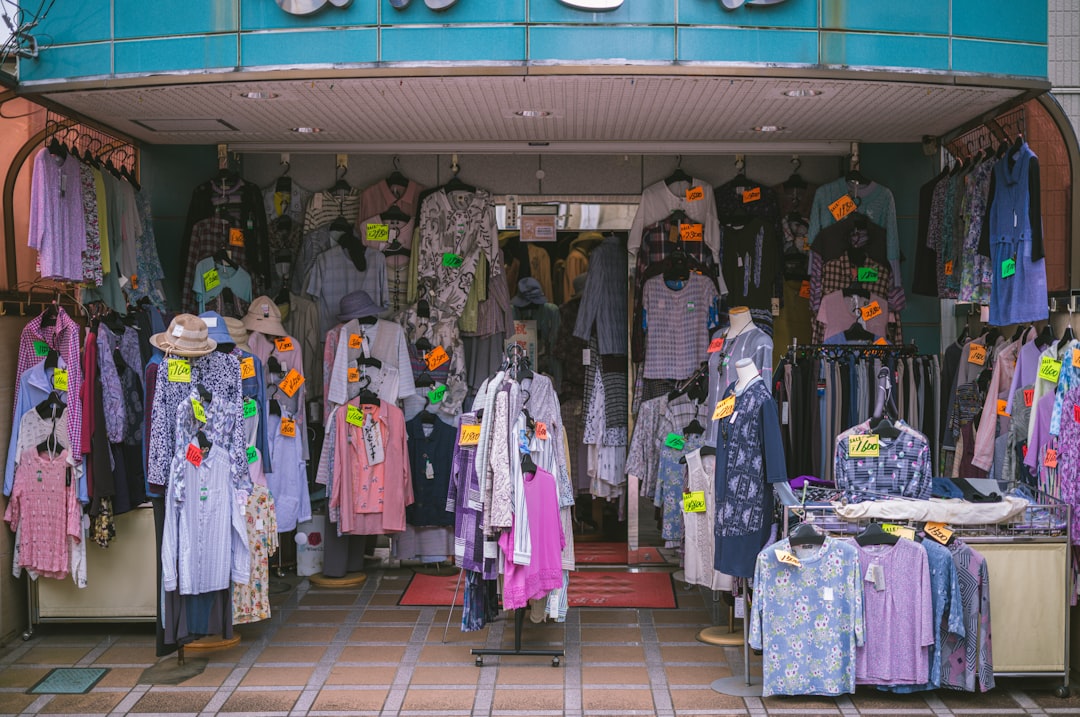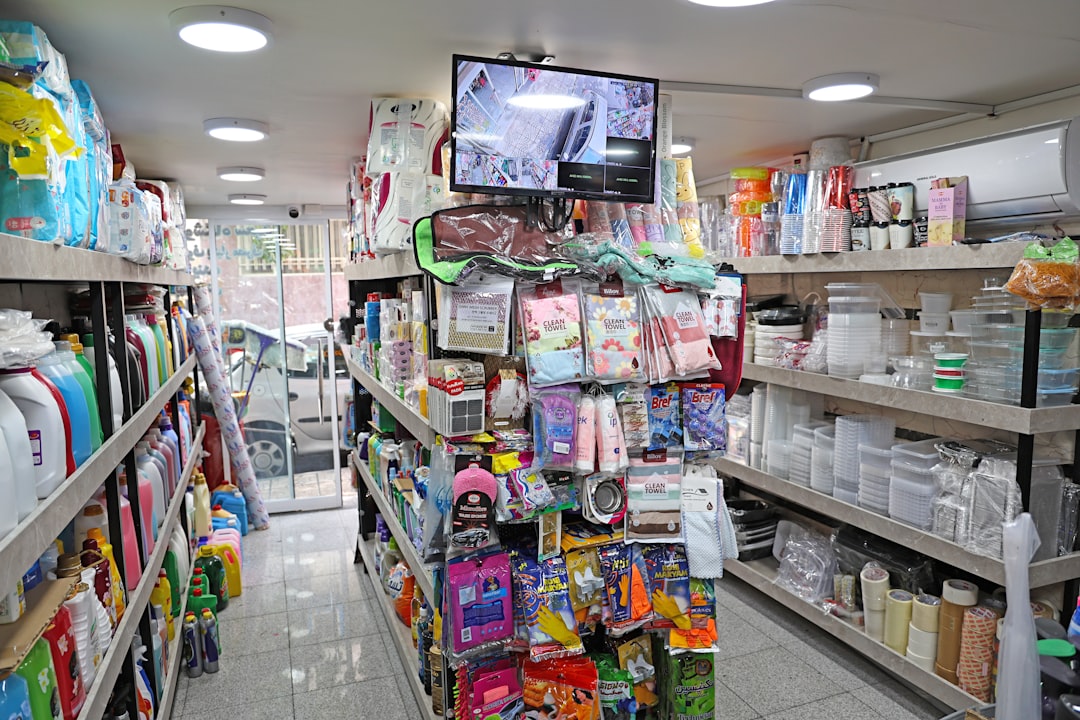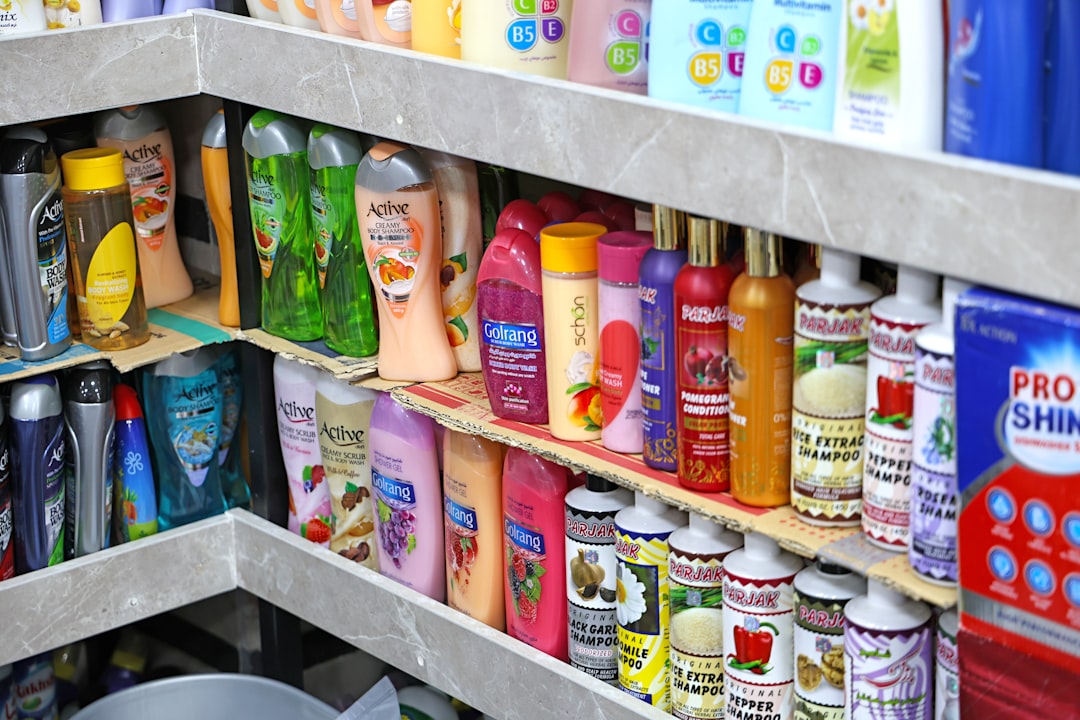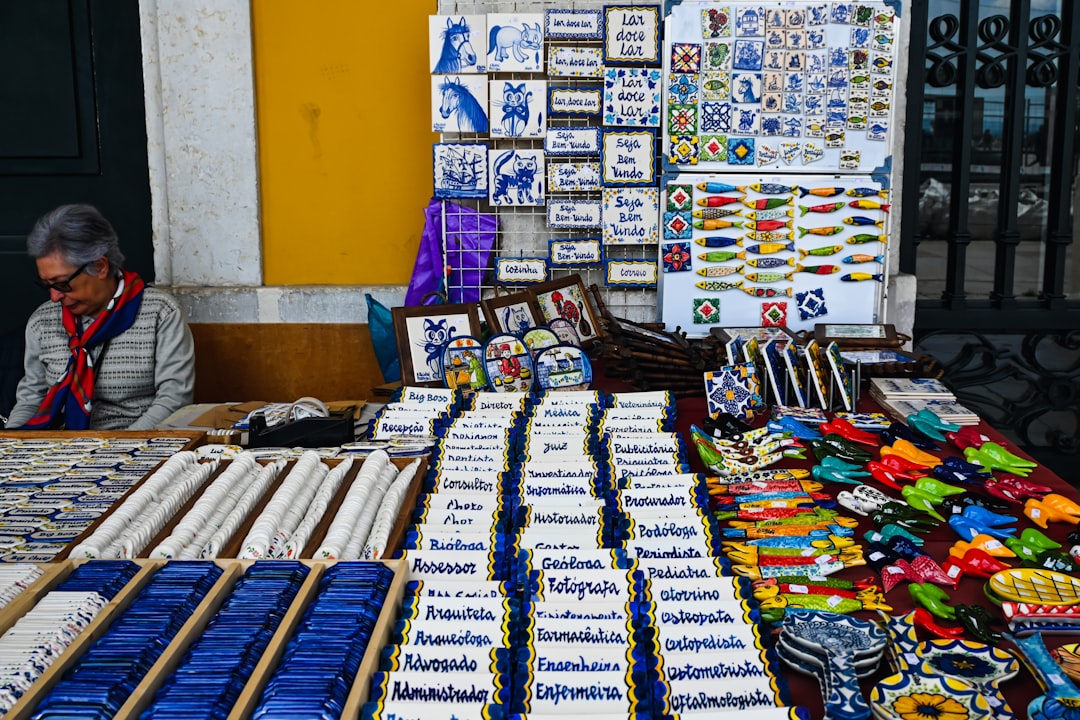

Engage prospects with a scan and streamline customer engagement with FREE QR code marketing tools by Sona – no strings attached!
Create a Free QR CodeFree consultation

No commitment

Engage prospects with a scan and streamline customer engagement with FREE QR code marketing tools by Sona – no strings attached!
Create a Free QR CodeFree consultation

No commitment
QR codes have become a powerful bridge between physical products and online experiences for wholesale variety merchandise suppliers. Many suppliers struggle to convert offline interest, at trade shows, in catalogs, or through sample orders, into meaningful digital leads. The inability to track and engage these high-value prospects leads to missed opportunities and slow manual processes. QR codes address these challenges by providing a direct path for prospects to transition from anonymous offline engagement to qualified digital inquiry.
For businesses operating in the wholesale varieties market, where product mix is king and efficiency is vital, the old methods like static catalogs, scattered contact info, and disconnected lead sheets create blind spots. These gaps make it easy for potential leads to slip away, especially when tracking anonymous or passive interest is difficult. By embedding QR codes on price sheets, sample packaging, or physical displays, suppliers can connect buyers instantly to digital assets and capture critical buyer signals in real time. This facilitates swift identification of high-intent visitors, timely follow-ups, and a unified journey from offline discovery to digital conversion.
This guide provides wholesale variety merchandise suppliers with actionable strategies and best practices for deploying QR codes, addressing common pain points such as lost leads, inefficient tracking, and disjointed marketing efforts. Learn how these tools seamlessly increase engagement, optimize lead flows, and drive measurable results in today’s competitive wholesale market.

For many suppliers, the challenge begins with prospects discovering their brand or products in an offline context at a trade event, through printed catalogs, or on product samples without an easy mechanism to express intent. Valuable lead opportunities often go untracked, leaving sales teams unaware of high-fit buyers who browse or inquire without completing forms. QR codes solve for this by turning common touchpoints into measurable entry points that remove friction and enable instant action.
Replacing analog processes is crucial. Printed line sheets become outdated quickly and paper applications get lost or miskeyed. A QR-enabled flow lets prospects scan to access current inventory, pricing, or a short wholesale application, then automatically syncs that activity to your CRM. When buyers are in motion, especially at shows, they are not likely to type long URLs or carry thick catalogs. A short, clear call to action next to a branded code captures that fleeting intent and transforms it into a qualified lead. Sona QR’s product overview supports every step, from code generation to scan analytics and CRM sync, so operations, marketing, and sales teams stay aligned.
By addressing critical friction points in the lead capture and follow-up process, suppliers position themselves to convert more demand faster without letting high-value buyers fall through the cracks. QR codes shift the rhythm of engagement from sporadic outreach to always-on responsiveness, turning once anonymous offline interest into a measurable, scalable pipeline.

Wholesale suppliers are often frustrated by the lack of visibility into who is engaging with their products and collateral in offline channels. Buyers routinely browse catalogs, scan product lists, or visit booths without signaling themselves, resulting in a damaging information gap. QR codes bridge this divide by connecting offline actions with digital journeys that are trackable and personalized through account identification without requiring an app or complex setup.
Speed matters in wholesale environments. Buyers need immediate access to current assortments, bulk pricing, and MOQ terms, and they want fast answers without email back-and-forth. QR codes let prospects transition instantly from physical encounters to digital actions such as viewing stock levels, requesting quotes, or submitting a wholesale application. Dynamic destinations ensure no one lands on a stale PDF or expired offer, and analytics reveal where, when, and how buyers engage.
In practical scenarios, QR codes on trade show banners can provide direct access to catalogs and pricing while codes on packaging support quick reorders. Suppliers can respond promptly to high-intent buyer signals, tune messaging to buyer stages, and develop unified, data-driven marketing approaches that grow pipeline and revenue.

One of the biggest barriers to converting offline interest is the lack of actionable contact or context on who engaged, where they scanned, and which product line drew attention. Selecting the right QR code format makes it easier to capture intent and guide the buyer toward the next best action, whether that is downloading a line sheet, scheduling a call, or submitting a wholesale application.
Wholesale variety merchandise suppliers tend to benefit most from formats that collect or enrich contact data, provide real-time product information, and enable quick reorders. While many formats exist, focusing on high-value destinations will keep the experience simple for buyers and rich in signals for your team.
Choosing between static and dynamic codes depends on your use case. Use static for evergreen materials that do not change. Use dynamic when you need tracking, the flexibility to edit destinations, or the ability to personalize experiences over time.

Suppliers often struggle to convert crowded trade shows, static print campaigns, and untracked packaging touchpoints into productive, measurable engagement. These high-traffic areas must do more than showcase logos and SKUs. They should spark action, capture data, and route interest to the right place the moment it appears.
QR codes make every physical surface a point of conversion. When codes are placed thoughtfully with clear calls to action, they help you attribute offline activity to pipeline, uncover hidden demand, and refine your channel mix. The result is less guesswork and a more predictable flow of qualified opportunities.
By identifying and activating these touchpoints, suppliers turn previously missed opportunities into consistent lead flow and data-rich segments for future retargeting. The immediate benefit is measurable engagement, and the longer-term value is a cleaner, more responsive funnel.

Use cases that pair common buyer behaviors with simple digital actions deliver the fastest wins. In wholesale variety merchandise, three patterns repeat across high-performing programs: capturing booth traffic, streamlining reorders, and keeping catalogs current without reprints. Each converts passive interest into a next step that benefits both buyer and seller.
When you select use cases, define the primary action and the business outcome. For example, a booth code might prioritize rapid follow-up and qualification, while a packaging code might prioritize reorder frequency and upsell discovery. Start with these:
These approaches lift both operational efficiency and customer satisfaction, creating a competitive edge for suppliers who modernize their engagement tactics with clarity and speed.
Each scan is a signal. It carries intent, location, timing, and context that can help you focus your marketing and sales efforts on the buyers most likely to purchase. Wholesale variety merchandise suppliers thrive when they segment audiences according to buying patterns such as reorder frequency, category interest, and readiness to negotiate terms. See Sona’s take on intent data for deeper strategy.
A multi-code strategy supercharges segmentation. Differentiate scans by channel and action, then sync data to your CRM and ad platforms to automate follow-up. You will replace broad-brush outreach with personalized touches that match what each buyer wants next, from a replenishment reminder to a new-season preview.
With Sona QR use cases, each code becomes a smart entry point into your funnel. Sona.com enriches scan data with identity resolution and multi-touch attribution, allowing you to retarget based on real behavior, not assumptions.
Wholesale variety merchandise suppliers often run offline and online efforts in silos. Catalog teams, trade show crews, and digital marketers may operate with different tooling and timelines, which can lead to inconsistent messaging and lost attribution. QR codes unify these efforts by turning every surface into a measurable gateway and every engagement into data that informs the next step.
Integration starts with standardizing CTAs and destinations. Build a small library of high-utility landing pages such as live inventory, quick quote, and wholesale registration. Assign codes to each channel and asset, then tag scans by source. With Sona QR, everything flows into a central dashboard that connects placements to outcomes and syncs with your CRM.
QR codes serve as the offline onramp to your digital marketing engine. A centralized platform like Sona QR lets you manage codes at scale, monitor performance across channels, and sync scan activity to your CRM and ad platforms so attribution is clear and optimization is continuous.
Executing a QR program that actually drives conversions requires structure and clarity. You need to define the buyer action, choose the right code type, design for scannability, deploy across the best placements, and then measure what happens. A systematic approach prevents ad hoc deployments and creates a repeatable playbook for your team.
Use the following checklist to plan, launch, and refine your QR campaigns. Include cross-functional stakeholders early, such as sales operations and customer service, so that post-scan workflows are fast and consistent. As you roll out, use Sona QR to centralize code management, maintain naming conventions, and keep data clean.
Start with the outcome you want, then work backward to the code and placement that will deliver it. Align the business goal with a clear buyer action to ensure relevance and high intent.
Select the format that aligns with your goal. Static codes are fine for evergreen assets. Dynamic codes are essential when you need tracking, flexibility, or personalization.
Make scanning effortless. The best creative in the world will not help if the code is too small, low contrast, or placed where phones cannot focus. Design for the environment and test thoroughly.
Place codes where intent is highest. Match each placement to the likely buyer mindset and make the next step obvious. Keep message consistency across assets to reinforce the desired action.
Treat every scan as data that informs your next move. Monitor performance by placement, creative, and destination. Iterate based on evidence, not hunches.
For suppliers, the pain of limited visibility into what actually drives orders persists. Anonymous catalog engagement, untracked trade show interest, and fragmented follow-up processes obscure true ROI. QR analytics change that by connecting each scan to a contact record, a campaign source, and, ultimately, a revenue outcome through offline attribution.
Effective tracking relies on both technical and process alignment. On the technical side, dynamic codes, UTM parameters, and CRM integrations are essential. On the process side, clear definitions of success, consistent naming conventions, and disciplined follow-up ensure that scan activity becomes sales activity. With Sona QR and Sona.com, you gain not only scan-level data but also buyer journey linkage and revenue attribution.
Advanced tools make it possible to move beyond basic scan counts. The result is actionable intelligence that informs budget allocation, messaging, inventory planning, and field strategies, all pointed at one goal: converting scans into revenue efficiently.
Sustained success comes from consistency and iteration. Treat QR programs as an ongoing growth channel rather than a one-off experiment. Standardize how you create, name, deploy, and measure codes. Then, build in automation so that every scan triggers the right next step without manual work.
Choose tactics that fit your most common media, such as catalogs, trade show assets, packaging, and invoices. Reinforce value for the buyer in every call to action and teach your frontline teams how to promote scanning with confidence and clarity.
As a creative example, include QR codes on bulk invoice inserts to let buyers reorder the same assortment in two taps, or add codes to shelf-ready packaging that link to cross-merchandising suggestions. For larger deployments, consider bulk QR codes to scale quickly. Start creating QR codes for free: Start creating QR codes for free, then expand to more advanced routing and attribution with Sona.com as your program scales.
QR codes have rapidly evolved from a novelty to a necessity in the wholesale variety merchandise supplier landscape, reshaping how businesses engage, track, and convert buyer intent across every physical and digital channel. Persistent pain points such as anonymous traffic, delayed follow-up, and fragmented attribution are not insurmountable. They require a fresh, connected approach that links each offline moment to a measurable digital action.
By embracing instant engagement, from catalog inquiry to order placement, suppliers capture high-value leads before they go cold, surface actionable signals for upsell, and ensure every marketing effort is not just seen but measured and optimized. QR codes are more than technology. They are the missing link that turns fleeting encounters into enduring, revenue-generating relationships. With Sona QR and Sona.com, you can manage QR deployment at scale, connect scans to pipeline, and prove impact from the first handshake to the final invoice.
QR codes have transformed wholesale variety merchandise suppliers from traditional sales channels into dynamic, measurable growth engines. Whether it’s streamlining product information sharing, enhancing buyer engagement, or accelerating order conversions, QR codes replace outdated methods with instant, mobile-friendly interactions that capture real-time data—turning every product display and catalog into a powerful sales driver. Imagine knowing exactly which merchandise categories attract the most interest and being able to optimize your inventory and marketing on the fly.
With Sona QR, you can create dynamic, trackable QR codes in seconds, update campaigns instantly without reprinting, and link every scan directly to sales outcomes. No more guessing which promotional efforts move the needle—just smarter, more efficient strategies that boost customer acquisition and deepen buyer relationships. Start for free with Sona QR today and transform every scan into a conversion, a loyal customer, or a closed deal.
Top wholesale variety merchandise suppliers use QR codes to bridge offline engagement with digital leads, enabling real-time tracking and seamless buyer journeys.
Finding reliable wholesale suppliers involves engaging those who integrate efficient tools like QR codes to provide dynamic product info, easy reorder options, and measurable buyer signals.
Using suppliers that deploy QR codes improves lead capture, reduces manual data entry, updates product info dynamically, accelerates buyer follow-up, and enhances overall operational efficiency.
While QR codes primarily enhance engagement and tracking, ensuring product quality involves selecting suppliers who maintain accurate, real-time inventory and pricing updates accessible through QR-enabled platforms.
Best practices include leveraging QR code analytics to understand buyer interest and behavior, segmenting audiences for targeted offers, and using timely, personalized follow-ups to negotiate based on real engagement signals.
QR codes provide a direct link from physical touchpoints like catalogs and trade shows to digital assets, allowing suppliers to track scans, capture buyer intent, and prompt immediate action.
Useful QR code formats include web links to live inventory, vCards for contact sharing, forms for wholesale applications, dynamic codes for editable destinations, and SMS or email initiators for quick messaging.
Suppliers should place QR codes on trade show assets, packaging and labels, printed catalogs, direct mail inserts, and in-store displays to capture buyer interest and facilitate conversions.
Suppliers can segment scan data by buyer type, product category, timing, and location, syncing this information to CRM and ad platforms to automate personalized follow-ups and targeted marketing.
Steps include defining objectives and buyer actions, selecting appropriate QR code types, designing and testing codes for scannability, deploying them strategically across channels, and tracking performance to optimize results.
They track scan volume, conversion rates, time to response, and revenue influenced by integrating dynamic codes with CRM systems and using analytics platforms to attribute offline activity to sales outcomes.
Tips include using unique codes per asset, adding UTM parameters for accurate attribution, automating follow-up communications, and educating staff and buyers on the benefits of scanning QR codes.
Use Sona QR's trackable codes to improve customer acquisition and engagement today.
Create Your FREE Trackable QR Code in SecondsJoin results-focused teams combining Sona Platform automation with advanced Google Ads strategies to scale lead generation

Connect your existing CRM

Free Account Enrichment

No setup fees
No commitment required

Free consultation

Get a custom Google Ads roadmap for your business






Launch campaigns that generate qualified leads in 30 days or less.
